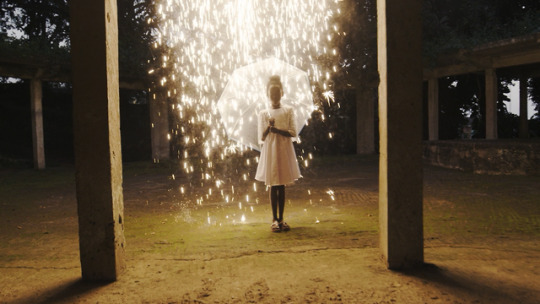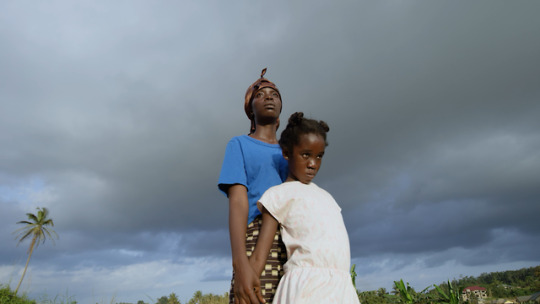Link
One dramatized documentary that brought many insights on mix race couples would be, Life of a Japanese Bride in America After World War two 1952. The film is an U.S. Army dramatized documentary, where Walter an American serviceman staying temporarily in Japan and married a Japanese woman named Mona Miwako Furuki. The documentary takes an angle from Miwako’s perspectives. Miwako was taken to America to live with Walter after they’re married, and Miwako would explain her struggles to assimilate to the American lifestyle and the culture. Miwako and Walter explained how they would attract plenty of attentions because they’re a mix race couple. Since Walter would leave for business errands, Miwako would get extremely lonely without Walter at home because her English isn’t developed yet she would have difficulties understanding and conversing with Walter’s mother. When Walter was away Miwako would get homesick, Walter understands Miwako’s concerns and he would find other ways he could work while staying with Miwako. Both sides sacrifice a lot within the relationship, such as Miwako leaving her homeland for her husband and Walter finding alternative ways to work while staying with Miwako. As any other normal relationship, both sides have to work together to make a relationship work. However, the documentary would capture the struggles mix race couples would experience in 1952 where the acceptance of mix race couples is uncommon. Eventually, Walter decided to make Japanese home ornaments with Miwako and they sold the ornaments, to their surprise the handmade ornaments sold out quickly and they opened a store to sell their products. As Miwako started working she feels more comfortable living in America, she would later learn more English to overcome her language barrier and her fear of feeling ashamed when she can’t communicate. As time goes by Miwako’s English improved and she would share her culture to Walter’s family, later on they started having children. As someone who lived in two countries as a child, I understand Miwako’s fear and feelings of alienation, shame, loneliness etc… As I’ve grew up more and gotten accustomed to American culture and learned more English, I would experience many opinions from others. I believe Miwako and Walter’s children would end up feeling something similar to me as appearance wise, they would look more Asian. Many would question their identity and most likely ask them why their English is so good, which was very similar to the Vin Diesel short film where he was judged based on skin color and appearances.
1 note
·
View note
Photo


A series for an assignment on social issues. I chose to focus on blackface in fashion and the double standards of beauty women of colour face.
255K notes
·
View notes
Text
The Burial Of Kojo
inAlthough the film takes place in Ghana, the reason why I chose the film “The Burial Of Kojo” was because of a film class I've taken with Professor Cobb. Professor Cobb taught a film class on African Americans within cinema and we’ve watched many films created by and about African Americans. Not only is the film “The Burial Of Kojo” is about representations of Africans and African Americans, the film has a much deeper message than that. The film takes on a very dreamy and ethereal shot of a home on top of the large body of water. The father is Kojo and the daughter is Esi, the film is told by Esi as she recounts her relationship and memories of her father Kojo. As discussed in my film class with Professor Cobb, she told us that Black films the depictions of African Americans are always on the tragic mulatto, on witches/sorcery, the minstrels, the mammy, the sacrificial character etc... Now with “The Burial Of Kojo” the film takes on a new approach in filming African people’s skin colors and representing African people without the stereotypical roles offered by White people. The film is crucial for African Americans because the film helps combat the lack of positive representation of the African American roles and skin color. The film uses a theme of different contrasts of colors to foreshadow, yet also creating an aesthetically pleasing cinematography that enhances the African people’s skin tone. I would also argue that the film challenged racial assumptions because the film doesn’t use the “regular” stereotypes that African Americans usually play. As discussed in the class discussion, with Deborah Willis emphasizing that photography is important for mediating experiences people had in America due to racial differences. I view films as the same in relaying those messages, as the film “The Burial Of Kojo” is to combat the lack of diversity within films yet also celebrating and appreciating the African people’s skin. Which is highly crucial for African Americans living in America, because with history telling them that their skin isn’t appreciated caused so many problematic racial internalizations that they continue to have today. Along with film production’s lack of effort in creating aesthetically pleasing filters that are compatible with African American’s skin colors (with the exceptional of few films that does so). All in all, I believe the film “The Burial Of Kojo” would help combat lack of diversity within film productions and show that the African American skin colors can be appreciated within cinema. One film that I would highly recommend that also fits with this week’s readings and lectures would be, “The Last Black Man in San Francisco”.
0 notes
Photo










The Burial Of Kojo (Sam Blitz Bazawule, 2018)
cinematography: Michael Fernandez
1K notes
·
View notes
Photo

Archetypes, not stereotypes.
That’s what the creators and cast of the hit play-turned-sitcom Kim’s Convenience, the first Canadian TV show with an all-Asian lead cast, have striven for from the beginning. And as the series starts its third season, the CBC production has found lasting success in being both funny and deep.
Creator Ins Choi, whose family moved from Korea and settled in Toronto when he was very young, started penning Kim’s Convenience as a play in 2005. At the time, with his acting career off to a bumpy start, he was invited to join the playwriting unit at fu-GEN, a Toronto theater company dedicated to developing Asian-Canadian stories.
“I came in with an idea: Write what you know,” Choi says.
At the same time, Choi also felt the stage was missing stories like his.
“I wasn’t seeing Asians on stage, I wasn’t seeing Asian stories,” he says.
Indeed, Kim’s Convenience – from its setting in a convenience store in downtown Toronto, to the generational differences between the immigrant parents and their children, to the prominence of the Korean church — is infused with the parts of Choi’s life that shaped him.
‘Kim’s Convenience’ Is A Sitcom About Asian Immigrants — With Depth
Photo: Canadian Broadcasting Corporation
3K notes
·
View notes
Text
Kim’s Convenience
The show is a sitcom about a first generation Korean immigrant family living in Canada. The family tries to work out family dramas, speaking up their struggles living in an English speaking country. Janet is an aspiring photographer who’s a college student, Jung is the first child and the bad boy of the family who dropped out of high school and is trying his best to redeem his past reputation by working in car insurance. Umma the mom and Appa the dad owns and runs a convenience store, the parents are playing the classic archetype while sometimes very accurate roles of an Asian parent. The show includes many characters that are very diverse and incorporate many interesting perspectives of white people through the lens of Asians. The reason why I chose the show Kim’s convenience is because of the unique representation of Asians told by Asians rather than white people. Although the show also includes white people, they’re represented through the perspectives of an Asian-specifically Koreans rather than the perspectives of a white person. Thus, representations of Asians are held within the palms of Asians with the power to represent themselves without the stereotypes that white people offer. Although the show’s chosen location isn’t in the United States, I see the similarities of Janet and Jung as the first generation child of an immigrant to be very similar to those who may relate, such as me. Growing up as an Asian American, the shows and films would have binary oppositions and lacked representations. As I've grown older there are more representations in films and T.V. shows about Asians-especially the year 2019, releasing many films and shows (Kim’s convenience) produced by Asians and the first Kpop band BTS earning a grammy’s award. Overall, the show encapsulates the daily lives of an Asian living in an English speaking country. The show not only has English yet also has their native language-Korean incorporated with subtitles to preserve the cultural context. The broken English helps create a closer and stronger ties with the audiences who relates to them; as a child of parents with English as their second language, seeing a character representing them makes me feel really happy that someone cares about representing them. Not only are Asian parents very hard workers, when arriving in another country that doesn't speak their familiar language they work relentlessly to compensate skills they don’t have. Seeing them represented is an extremely touching and warm gesture by the producers, that Asian parent’s representations are necessary as well as the first generation children. Especially when we as the first generation understand the struggles they have to go through, to earn every penny from scratch and pave a way of sacrifices they have to go through for us to live a “normal” life.
2 notes
·
View notes
























